4. Images that speak and move
The San Damiano
crucifix, originally in the beautiful church just outside Assisi. It was
here c 1205 when the crucifix spoke to St Francis, saying ‘Francis,
Francis, go and repair My church which, as you can see, is falling into
ruins.’
The crucifix has now been moved to the Basilica of St Clare, up
the hill in Assisi, and is guarded by the Franciscan Poor Clares, who
were originally based at San Damiano. There is a replica at San Damiano.
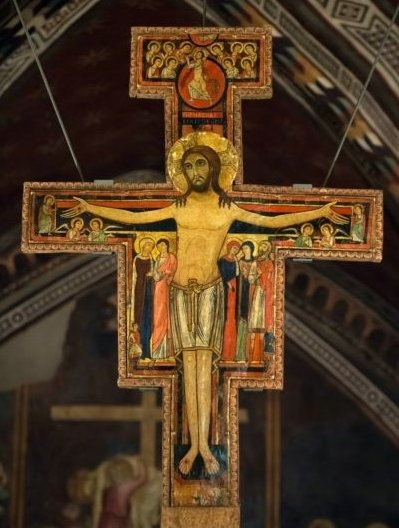
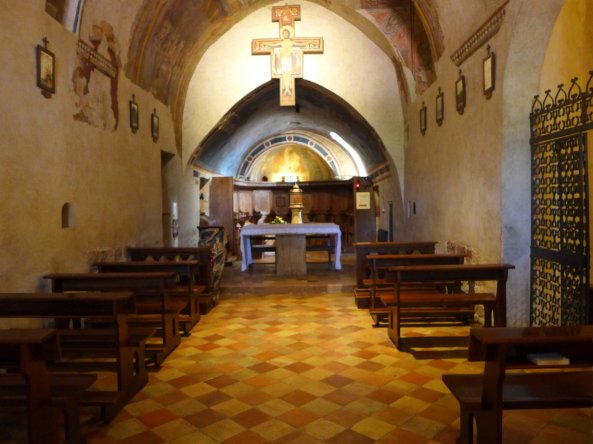
San Damiano, with the crucifix replica.
The fresco below
was said to have been painted on the wall of a prison in Prato, Tuscany.
On July 6th 1484, the
virgin began to move, and stepped off the wall, much to the astonishment
of a passing child. It was decided to replace the prison with a church,
and in the church, Santa Maria delle Carceri, (St Mary of the Prison)
the miraculous fresco has been placed behind the altar.
The Virgin is placed between St Leonard and
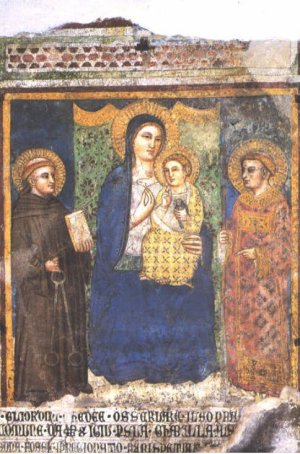
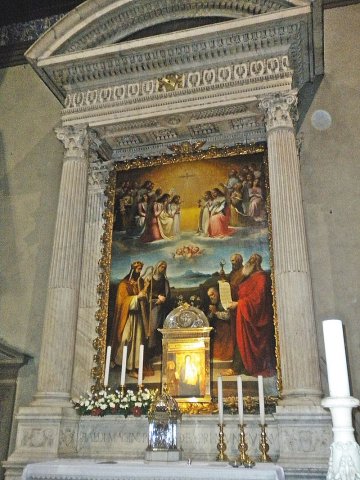
The miraculous image, in front of the larger painting behind the altar.
The church of Santa Maria dei Miracoli in Venice was built to
house this miraculous image of the Virgin and child, attributed to
Zaninio di Pietro, dated c 1409. It was originally outside the house of
Francesco Amadi, a wealthy Venetian, but when miracles occurred it was
decided it needed a church of its own, and the Miracoli was built; it is
one of Venice’s most beautiful churches.
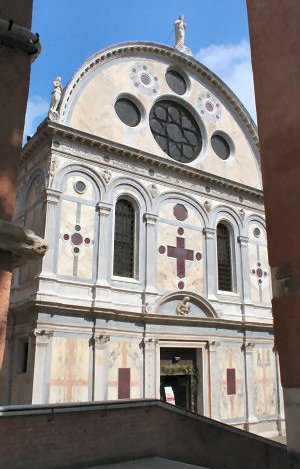

Venice is very much a home for miraculous images, possibly the result of many plague outbreaks. Saint Roche, San Rocco in Italian, was the saint invoked against the plague. The image below. showing Christ carrying the cross, is the altarpiece at the Scuola Grande di San Rocco. Its authorship is a matter of debate.
The confraternity of the Scuola were delighted to learn of the miracles attributed to the painting, which brought in a great deal of money. Stories spread, and it was claimed that the image was so powerful it could work at a distance. Rather than curing sickness, the image was noted for rescuing people in danger: a well-known story tells how a child was snatched from its cradle by a wolf and taken off into a forest, but was saved by the intercession of the image.

Below is the Black Madonna of Rocamadour, in France. Rocamadour has been a pilgrimage destination for centuries, and the Black Madonna was thought to be responsible for miraculous cures. Henry II of England and Louis IX of France came here seeking cures.
Rocamadour is said to be named after St Amadour, traditionally the sculptor of the Madonna. Legend tells us that he was the husband of Veronica, of veil fame: the two fled to France from Jerusalem. Amadour’s grave was discovered here.
The sculpture was rather overdressed on our visit: the second picture gives a clearer impression of the sculpture.

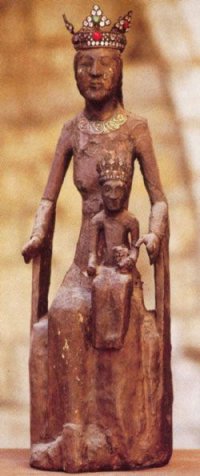
Back to page 1 On to page 4